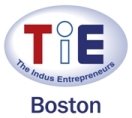Here are some thoughts about entrepreneurship, teambuilding and fundraising given to us by Carol Realini, CEO and Founder of Obopay, a comprehensive mobile payment service.
Generating the idea:
The key is to come up with a strong vision and stick with it. Some entrepreneurs listen to everything people are saying and then zigzag according to the latest piece of advice they've gotten – that's taking too much advice. Be clear about what kind of advice you are getting by finding out who the domain experts are.
Try to see the potential in an idea before other people see it – or at least be among the first 50 people in the world to see it. Being early in a massive market and having a really big value proposition will give you some cushion when mistakes happen (and they inevitably will).
Along those lines, if you are going to be early in the market, spend some time figuring out what the market is. What are people going to use this for? You have to figure out what the market is before it is obvious.
At right: Carol Realini, CEO, Obopay, explaining the Foolproof "10-5-3-1" Fundraising Formula.
Realize that the rules can change and you want to be early in a big market. And then go to work on execution because if you've done all the right preparation and then fail to execute, you'll get nowhere!
Building a team:
It's crucial to build a team of people who can work together. Not everyone has to like each other, but you do have to be able to work together in a professional way.
There are challenges in finding people willing to join a startup. But realize that it is important not to recruit too hard. You want to sell your vision enough that people want to opt in – otherwise, they may abandon ship right about the time the work gets hard!
On Fundraising:
The main difference between people who can raise money and those who can’t is that those who raise money don’t give up. I once came close to losing my house (and I had three kids!) – “I wouldn't recommend putting your house on the line if you can help it”.
Raising money is not magic, but it is hard work. You need to get a lot of help from mentors and advisors to do it well. The good news is that there is a lot of help out there because “This Valley is a generous Valley.”
Fundraising nitty gritty:
Never cold call VCs – It is a total waste of time. But, it is important to have 3-5 'practice' sessions with VCs who are not your top choices so you can do well when you finally get the meetings you really want to have.
At Series A, whatever you raise is going to be your pre-money valuation!
I like convertible debt. I like angels, but fewer is better.
Finally, Carol's Foolproof “10-5-3-1” Formula For Fundraising:
You need to have 10 great meetings. Till you have 10 great meetings, keep meeting with VCs. You need to have 5 VCs doing serious due diligence. Don’t stop till you get 5. Get 3 term sheets. Keep working till you get them.
Sean O’Malley runs The Quarry, a business incubator at Venrock, a leading venture capital firm. In the last 18 months he has started 6 companies that have gone from blank slate, through “ideation”, execution and validation to receive Series A funding. He spent more than an hour talking with TLP Fellows about the “Idea Development Model” he uses.
The first question to ask yourself is whether you are looking to build a “Lifestyle Business” or the kind of business that could grow to an enormous size (i.e. one that could be venture funde).
Then, you have to find the “Idea Sweet Spot” to put yourself in the right position to unleash ideas, vet the best ideas and find 'the one'. To do this you have to:
Go Broad by aligning your interests with demographic, behavioral or technological megatrends.
Go Deep by uncovering meaningful problems – large, Blue Ocean opportunities that can inspire investment.
Do Customer Discovery – validate the idea with influential customers, get in front of them to learn their problems, wants and needs
It is important to take the time to do ideation right. The first thing I do when an entrepreneur comes in to The Quarry is put them through “detox”. 9 times out of 10 this is the best thing they have ever done. It is great to be able to take that step back. It should take a least three months, which may seem too long, but the idea forming stage is really the only time you'll have time!
You have to be a little bit crazy to be an entrepreneur at an early stage. The deck is stacked against you. A lot can be learned but of course, the fire and passion cannot be trained.
Entrepreneurs are risk reducers. They take a risk when they decide what they will do and then spend most of the time taking risk out of the venture.
The business model is critical. You need to ask 1) where is the money flowing today? And 2) how can I get into that stream? Of course, Twitter would not have started if they had to have a clear business model upfront!
Above all, remember that “Most successful ideas make people's lives better”.

and Asaf Kharal, Wilson Sonsini Goodrich and Rosati (third from left).









1 comment:
This is awesome! Lot of good insights.
Post a Comment